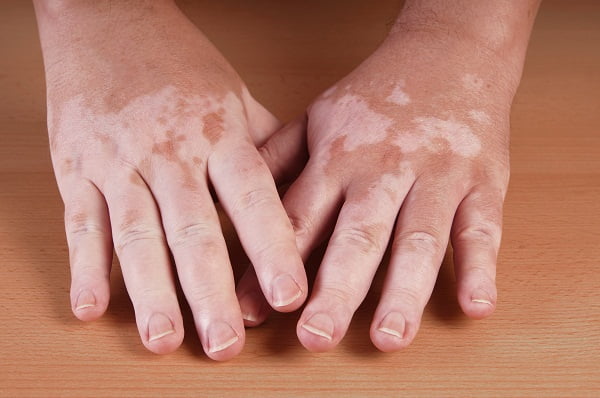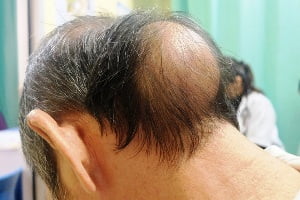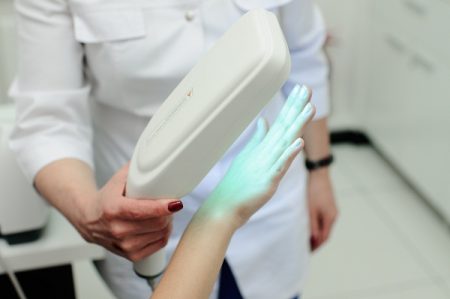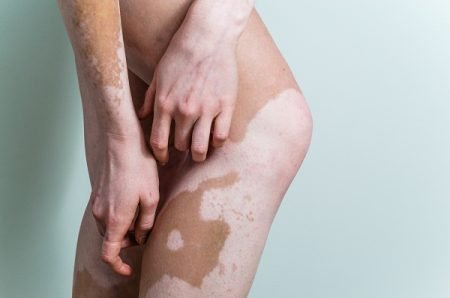
Vitiligo is a long-term problem in which growing patches of skin lose their colour. It thereby causes the loss of the natural colour. This may be termed as de-pigmentation by a dermatologist.
This loss of pigment can occur anywhere on the body. These patches are usually common in areas where the skin is exposed to the sun. These are mainly seen on the hands, feet, arms, face, and lips. But the patches can also be visible on armpits, groin, around the mouth, eyes, nostrils, navel, fingers and wrists, inside the mouth, genitals, and in rectal areas.
Signs and Symptoms of Vitiligo
The main sign of vitiligo is pigment loss that may result in milky-white patches on the skin due to the exposure to sun. At times it can also extend to hair roots, such as the scalp.
Deprived melanin in your skin can result in white or grey hair. After the onset of the white patches, they may remain still for a while after which they might get bigger. Recurrent cycles of pigment loss and stability may therefore be observed.
The shapes of patches are irregular. The edges at times become little inflamed with a slight red colour resulting in itchiness. Though the disease can start developing at any age, it is usually observed between the ages of 20 and 30.
The disease is also seen to affect both sexes and races equally. The skin affected by vitiligo if often itchy or painful. The patches of affected skin itch or feel painful, but does not cause other discomforts such as dryness, irritation, soreness etc.
Common signs are:
- Patchy loss of skin color
- Loss of color in the tissues inside of your mouth and nose (mucous membranes)
- Change in the color of the eyeball (retina)
- Whitening or graying of hair on scalp, beard, eyeleashes, and eyebrows
Depending on the type of vitiligo you may have, the patches or discoloration may appear on:
- Many parts of your body
- Only one side of your body
- Only on a few areas of the body
What causes vitiligo to spread?
It is very difficult to predict the rate at which these patches may spread to other body parts as the patterns may vary significantly. For certain people the spread may occur rapidly, while in some other people the onset may take several years.
In still some other individuals, the spread to other areas of the body can be very fast. The spread of vitiligo is reported to be faster after a person experiences some emotional or physical stress.
Complications of Vitiligo
The complications that may emerge with vitiligo are as follows:
- Psychological or social problems
- Sunburn
- Skin cancer
- Dermatoheliosis
- Treatment-induced permanent photosensitivity
- Iritis and other issues related to the eyes
- Hearing loss
- Side effects of treatment such as itching
- Koebner’s phenomenon
Certain parts of the body, like face, may respond better to treatment than others. Treatments are seen to be more effective in children as compared to adults. Read about treatment of vitiligo.






